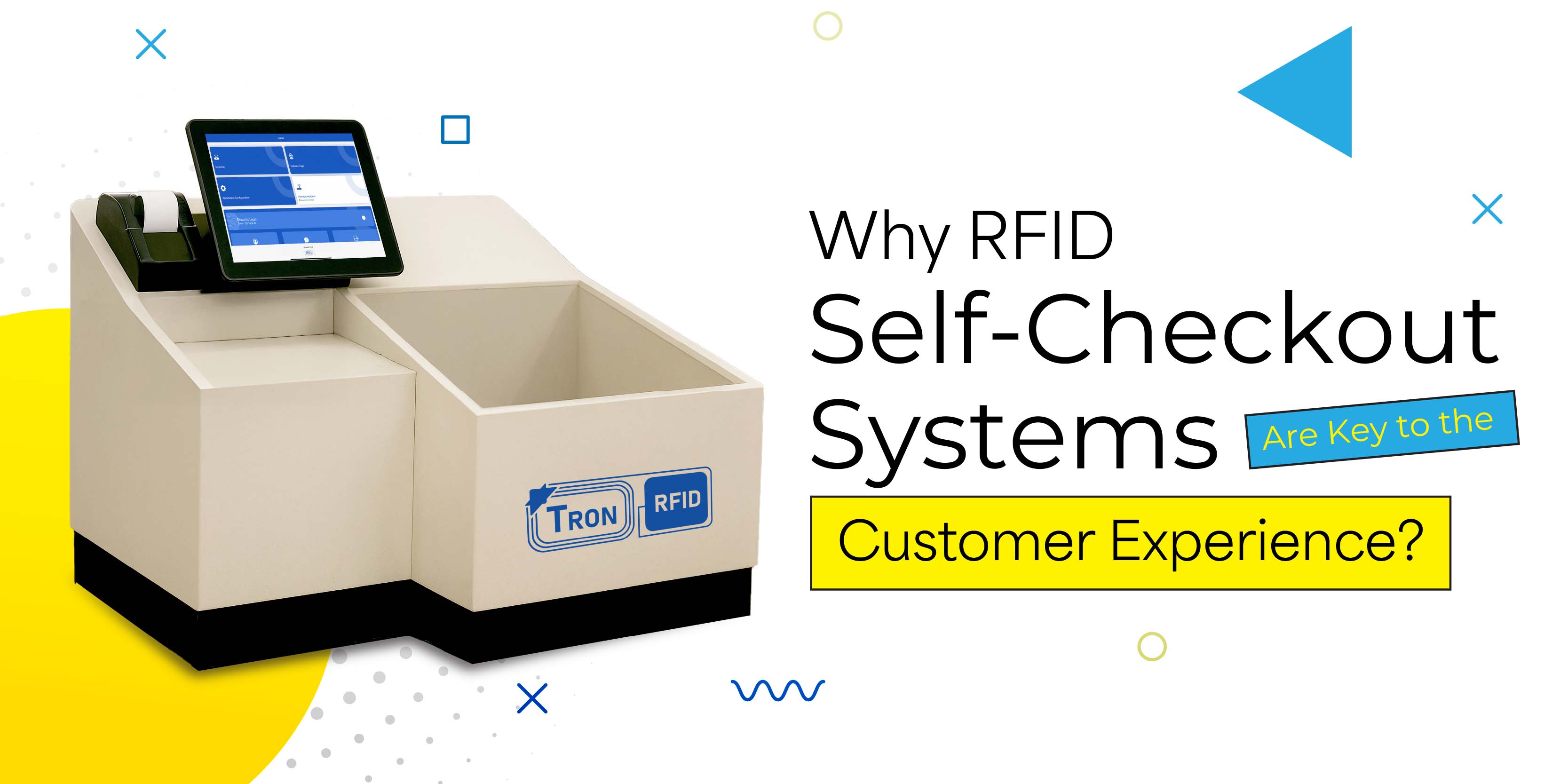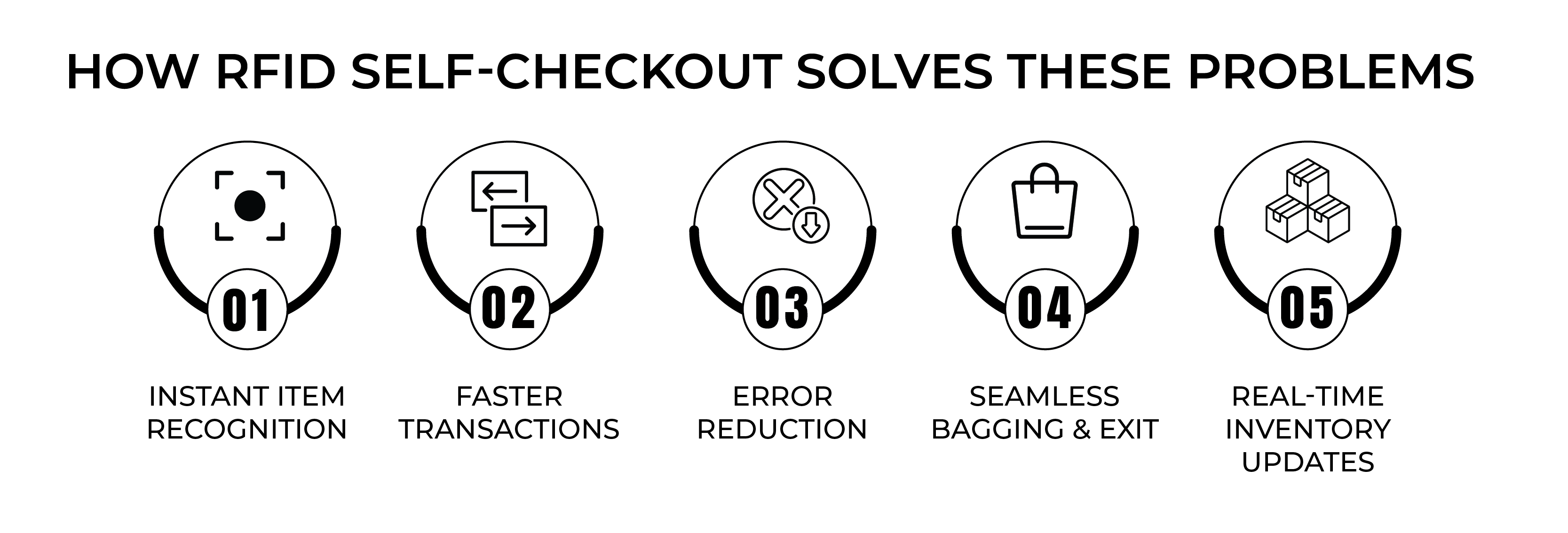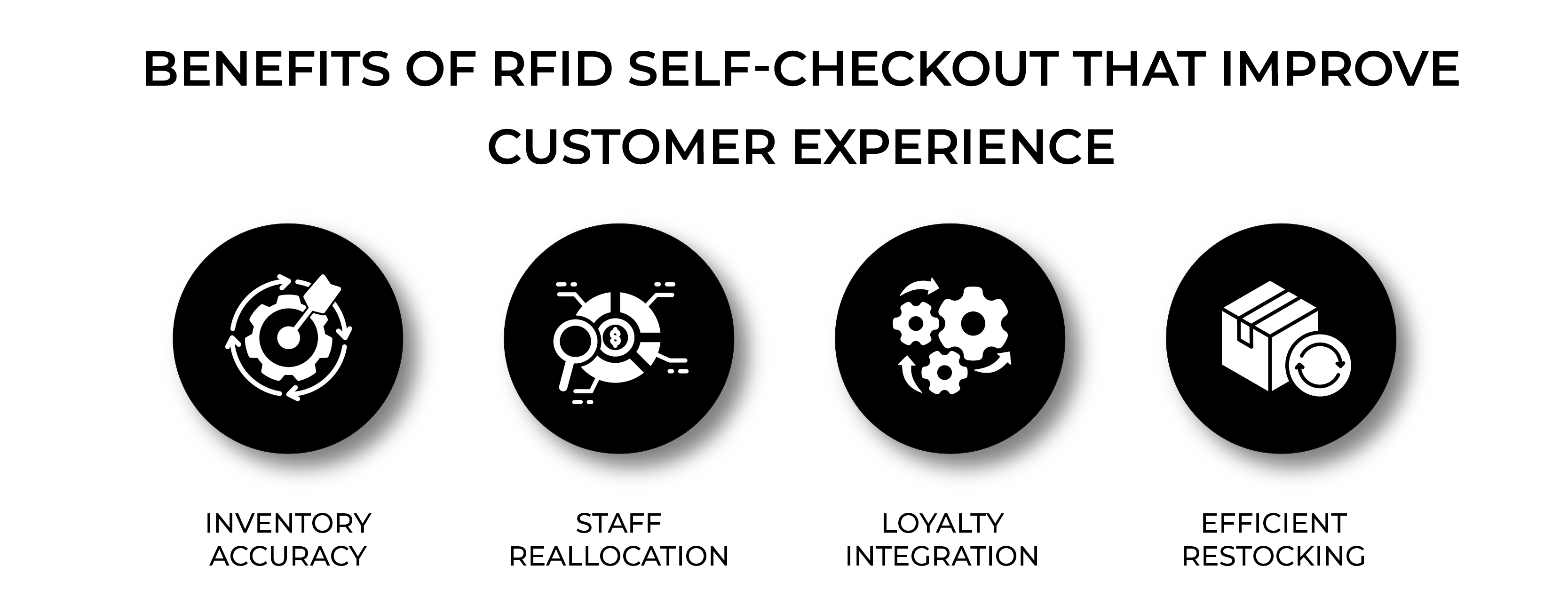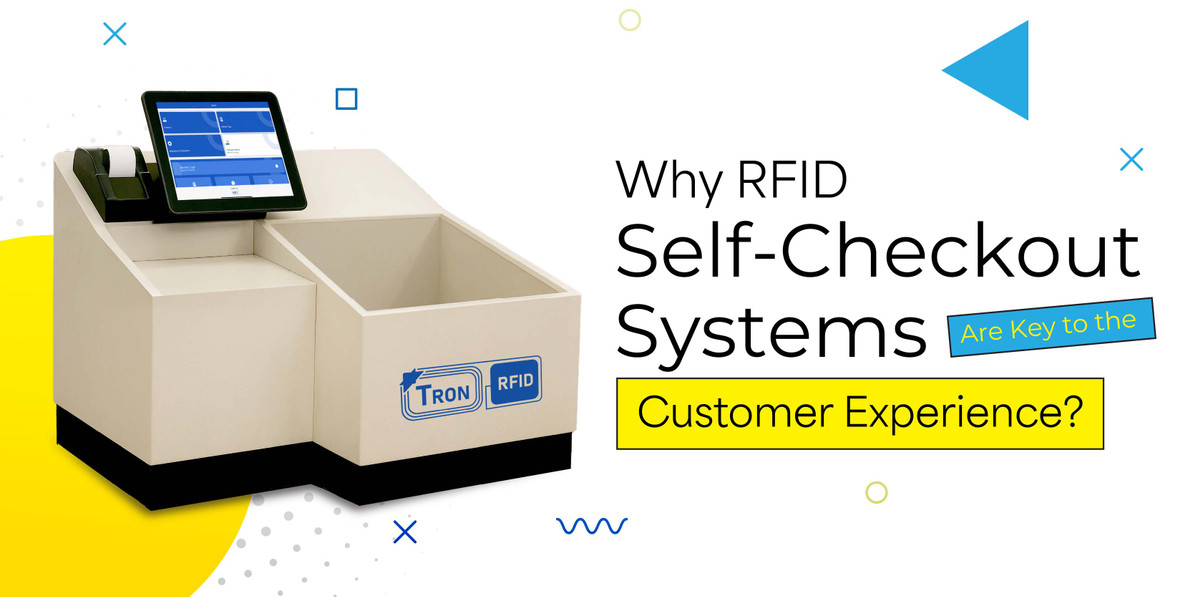Why RFID Self-Checkout Systems Are Key to the Customer Experience
Retail is evolving rapidly. Customers today expect speed, convenience, and minimal friction during their shopping journey. Traditional checkout counters—once the norm—are increasingly seen as bottlenecks. Long lines, manual scanning, and limited staff availability often lead to frustration.

To meet these expectations, retailers are turning to self-service models. Among these, RFID (Radio Frequency Identification) self-checkout systems stand out for their ability to streamline the process without compromising accuracy or control.
This blog examines how RFID self-checkout systems operate, their significance, and the direct impact they have on the customer experience.
Understanding RFID Self-Checkout Systems
RFID is a wireless technology that uses radio waves to identify and track items. Unlike barcodes, which require line-of-sight scanning, RFID tags can be read instantly—even through packaging or when stacked.
Key Components of an RFID Self-Checkout Setup:
An RFID self-checkout system typically consists of three core components. First, RFID tags are embedded in or attached to each product. Second, RFID readers are installed at self-checkout kiosks or integrated into smart counters, enabling the system to detect all tagged items simultaneously without manual scanning. Third, backend software connects these self-checkout kiosks to the store’s inventory and payment systems, ensuring real-time transaction processing and automatic stock updates. Together, these elements create a seamless checkout experience that minimizes friction and enhances operational reliability.
This setup allows customers to place items in a designated zone, where all products are automatically recognized—no need to scan each one individually.
Customer Experience Pain Points in Traditional Checkout
Despite improvements in POS systems, traditional checkout still presents several challenges:
Long Queues: During busy hours, long checkout lines frustrate customers, often leading to abandoned purchases and a negative perception of the store’s efficiency.
Manual Scanning Errors: Inaccurate scans, missed items, or pricing mistakes slow down transactions and create confusion, requiring staff intervention and delaying other customers.
Limited Staff Availability: With fewer cashiers available, customers experience longer wait times and reduced assistance, particularly when handling complex purchases or resolving issues.
Friction in Payment and Bagging: Shoppers must manage scanning, bagging, and payment simultaneously, which can feel disorganized and stressful, especially for those with many items or limited time.
These issues collectively reduce satisfaction and can even impact repeat visits.
How RFID Self-Checkout Solves These Problems
RFID technology addresses these pain points with precision and speed:

Instant Item Recognition: RFID readers instantly detect all tagged items without manual scanning, even when products are stacked or bagged, eliminating the need for line-of-sight.
Faster Transactions: Checkout becomes significantly quicker as RFID processes multiple items simultaneously, reducing wait times and improving overall customer flow.
Error Reduction: RFID minimizes common scanning issues like missed items or duplicates, ensuring accurate billing and fewer interruptions during checkout.
Seamless Bagging and Exit: Customers can bag items freely before or during checkout, streamlining the process and allowing for a smoother exit experience.
Real-Time Inventory Updates: Each RFID-enabled transaction updates inventory instantly, helping maintain accurate stock levels and improving product availability for future shoppers.
These improvements translate directly into a smoother, more efficient experience for shoppers.
Benefits to Retailers That Indirectly Improve Customer Experience
Beyond the immediate checkout benefits, RFID systems offer operational advantages that enhance the overall shopping environment:

Inventory Accuracy
RFID technology enhances inventory visibility and reduces shrinkage by tracking items in real time. This ensures that high-demand products remain available on shelves, minimizing customer disappointment and improving overall satisfaction with product accessibility.
Staff Reallocation
With RFID automating checkout tasks, retailers can reassign staff to more customer-facing roles such as assistance, returns, or shelf management. This improves service quality and responsiveness, especially during peak hours, without increasing labor costs.
Loyalty Integration
RFID systems can connect purchases to individual customer profiles, enabling seamless loyalty point tracking and personalized promotions. This strengthens customer engagement and encourages repeat visits through targeted incentives and faster reward redemption.
Efficient Restocking
Real-time inventory updates from RFID transactions allow retailers to identify low-stock items quickly and restock shelves proactively. This reduces out-of-stock incidents and ensures a consistent shopping experience for customers across all store visits.
These backend efficiencies contribute to a more reliable and pleasant shopping experience.
Use Cases and Industry Adoption
RFID self-checkout is gaining traction across multiple retail formats:
Apparel and Fashion: Retailers like Uniqlo, Decathlon, Zara etc use RFID to streamline inventory tracking and enable quick self-checkout, reducing wait times and improving the shopping experience for customers in clothing stores.
Electronics and Lifestyle Stores: RFID self-checkout system improves asset protection by continuously monitoring high-value merchandise such as gadgets and accessories, helping reduce theft and loss. It also accelerates checkout, making it ideal for stores handling premium consumer goods.
Grocery and Convenience: Some stores deploy RFID-enabled baskets or smart carts that automatically register items as customers shop, simplifying checkout and reducing friction in fast-paced, high-volume retail environments.
Pharma Store: RFID helps manage sensitive and regulated products by ensuring accurate tracking, reducing dispensing errors, and speeding up checkout for over-the-counter items—all while maintaining compliance and inventory integrity.
Libraries: RFID enables fast self-checkout and return of books, improves cataloging accuracy, and reduces manual handling. It also enhances security and streamlines inventory audits, making library operations more efficient for both staff and patrons.
These implementations show that RFID is not limited to one sector—it’s adaptable and scalable.
Challenges and Considerations
While RFID self-checkout systems offer clear benefits, retailers must consider key challenges before implementation. Initial infrastructure costs—including tags, readers, and software—can be substantial. Customers unfamiliar with RFID may require onboarding support to ensure smooth adoption. Additionally, integrating RFID with existing POS and ERP systems demands careful planning, though solutions like TagMatikes RFID Software simplify this process. Addressing these factors is essential for a successful and customer-friendly rollout.
Conclusion
RFID self-checkout systems offer a practical, scalable solution to many of the challenges faced in modern retail. By reducing friction, improving accuracy, and speeding up transactions, they directly enhance the customer experience.
For retailers aiming to stay competitive, RFID should be a key component of their digital transformation strategy. When implemented thoughtfully, it not only improves operations but also creates a shopping environment that customers genuinely appreciate.
Balancing technology with human support remains essential—but RFID makes that balance easier to achieve.
Recent Posts
-
How RFID Anti-Theft Tags Revolutionize the Retail Industry
Introduction Retail theft and inventory shrinkage are challenges that every store owner faces. Wheth …Dec 22nd 2025 -
RFID Portals in Manufacturing: Tracking Work-in-Progress Efficiently
Introduction Manufacturing thrives on precision and timing. Every part, component, and subassembly m …Dec 15th 2025 -
RF Shielding Explained: Types, Applications, and Benefits
Introduction RF shielding is essential for protecting devices from electromagnetic interference. Thi …Dec 8th 2025




